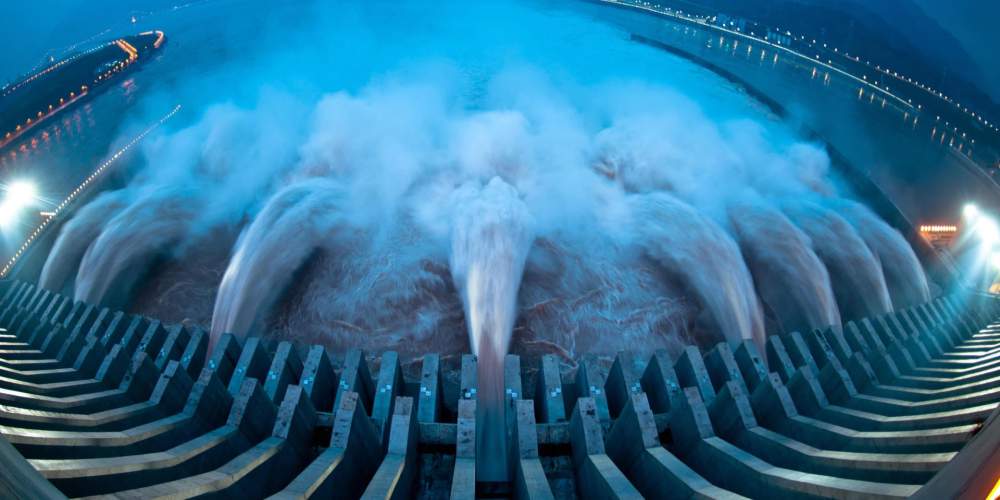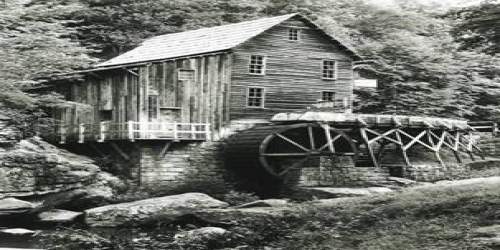Read Time : 3 Minutes
How Electricity is produced with a Hydroelectric Turbine.
How Hydroelectricity is Generated
Fast moving or falling water is the primary ingredient needed to create hydroelectric power. In most large scale constructions, the water is held back behind a dam and the force of the water being released is used to drive the blades of a turbine which in turn creates electricity that can be fed into the grid.
We are also looking at new and innovative ways to transform the energy of moving water into power for our homes through the tides of our oceans and fast flowing rivers.
Find out more about the types of hydroelectricity generation.
Large Scale Hydroelectricity
Most power plants that use water share the same basic components that all lead to a valuable source of renewable energy.
- A reservoir or dam. You’ll often find people sailing on it or swimming in the water as many reservoirs are used for recreational purposes but they have a far more important purpose. A dam allows the power plant to control the amount of water that is fed into the system and helps to maintain the constant supply of electricity.
- The pipeline or penstock. This is a channel that leads downwards towards the power plant turbine and is usually protected by a gate that can be opened and closed to control the amount of water coming through – it gradually pressurises the water as it approaches the turbine.
- The turbine. Most power stations use the Francis Turbine, a large disc with curved blades which turn as the water hits them. This mechanical energy is then used to turn a central shaft. A turbine can be over 170 tonnes in weight and turn at a speed of nearly a 100 revolutions each minute.
- The generator. The heart of electricity production is a series of magnets which are turned by the shaft of the turbine, causing the production of alternating current or AC.
- The transformer. This alternating current is then fed into a transformer that is converted into a higher voltage which is then fed into power lines.
The water from the operation can either flow down the dam to a river continuing on its way or it can be collected in a secondary reservoir and the water can be pumped back up to be used again. Find out more about large scale hydroelectric power stations.
COMPARE PRICES FROM LOCAL INSTALLERS
Compare prices from local companies fast & free
Enter your postcode to compare quotes from leading professionals. We promise to keep your information Safe & Secure. Privacy Policy
Smaller Scale Hydroelectric Power Systems
Anyone who has ever been white water rafting or stood on a surf board will be aware of the true power that moving water generates. In recent years we have started to develop more localised applications for hydroelectric power that means we now have the technology to provide energy for homes and commercial premises in a similar way that we do for solar and wind.
The system works the same as for the major power plants except that the water is normally from a localised source like a fast flowing river. A standard hydro system will contain the following components:
- An intake, through which the water flows (this has a filter which stops debris and fish from entering and damaging the hydro system, and vice versa).
- A penstock or pressurised pipe between the water intake and turbine through which the water drops.
- A turbine which converts the pressure of the water into mechanical energy (this can be located either in a powerhouse or, in the case of barrage systems, in the river itself).
- Control panels which monitor the system’s output.
- A generator that converts the rotational energy from the turbine shaft into electricity.
- An export power cable that connects the system to buildings and/or to the electricity grid.
- The Smart Export Guarantee (SEG) can pay you for surplus electricity. Contact your Energy Provider for information on rates.
- A powerhouse which will house the turbine, generator and meter.
- A tailrace or canal from the powerhouse through which the water returns to the river.
- In the case of off-grid systems, a battery to store the energy generated.
If you have the site to benefit from hydroelectric power, you need to understand that a significant amount of engineering work will need to be done. This will depend entirely on the size of the project and the proposed installation site’s specifications. Some sites may be able to make use of existing mill house structures, which will reduce the initial cost.
The installation process (to say nothing of the feasibility and planning stages) for hydro systems can be a lengthy process - typically 3-4 months, though this obviously depends on the scale of the system. Find out if your site is suitable here.
The Future of Hydroelectric Power
There are many who believe that the full potential of hydroelectric power has yet to be achieved and that, because we have become over dependent on fossil fuels, we are now playing catch up with the technology. Whilst some experts feel we need to unleash the potential of smaller scale hydroelectric projects which may not be cost effective, others think that the key to the industry lies in the sea surrounding the UK.
Hydroelectric System Efficiencies
Efficiency here refers to the rate which the hydro system converts the energy it receives into usable electricity. Hydroelectricity systems are among the most efficient of all renewable electricity generation technologies, typically running at more than 50%, even going as high as 90% (compared to just 10%-20% for solar PV).
The efficiency of some larger systems may be as high as 95%. Keeping the system well maintained is vital if you want to get the best efficiency from your system.
Find a local installer
Welcome to the biggest directory of UK renewable energy companies





 Is Hydroelectricity Generation Worth it
Is Hydroelectricity Generation Worth it


